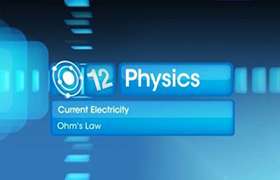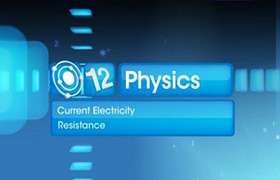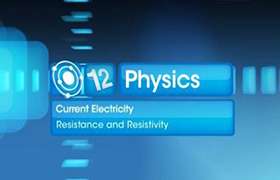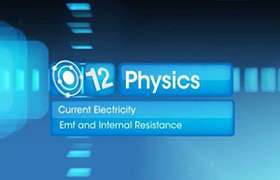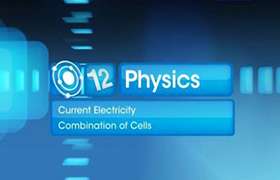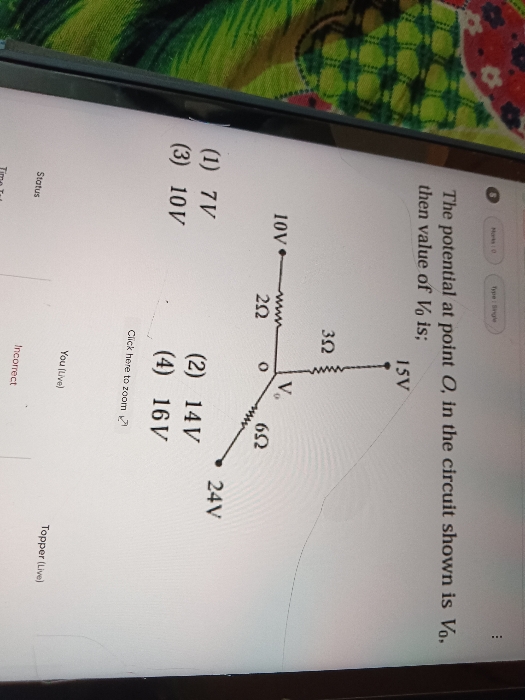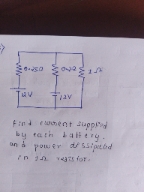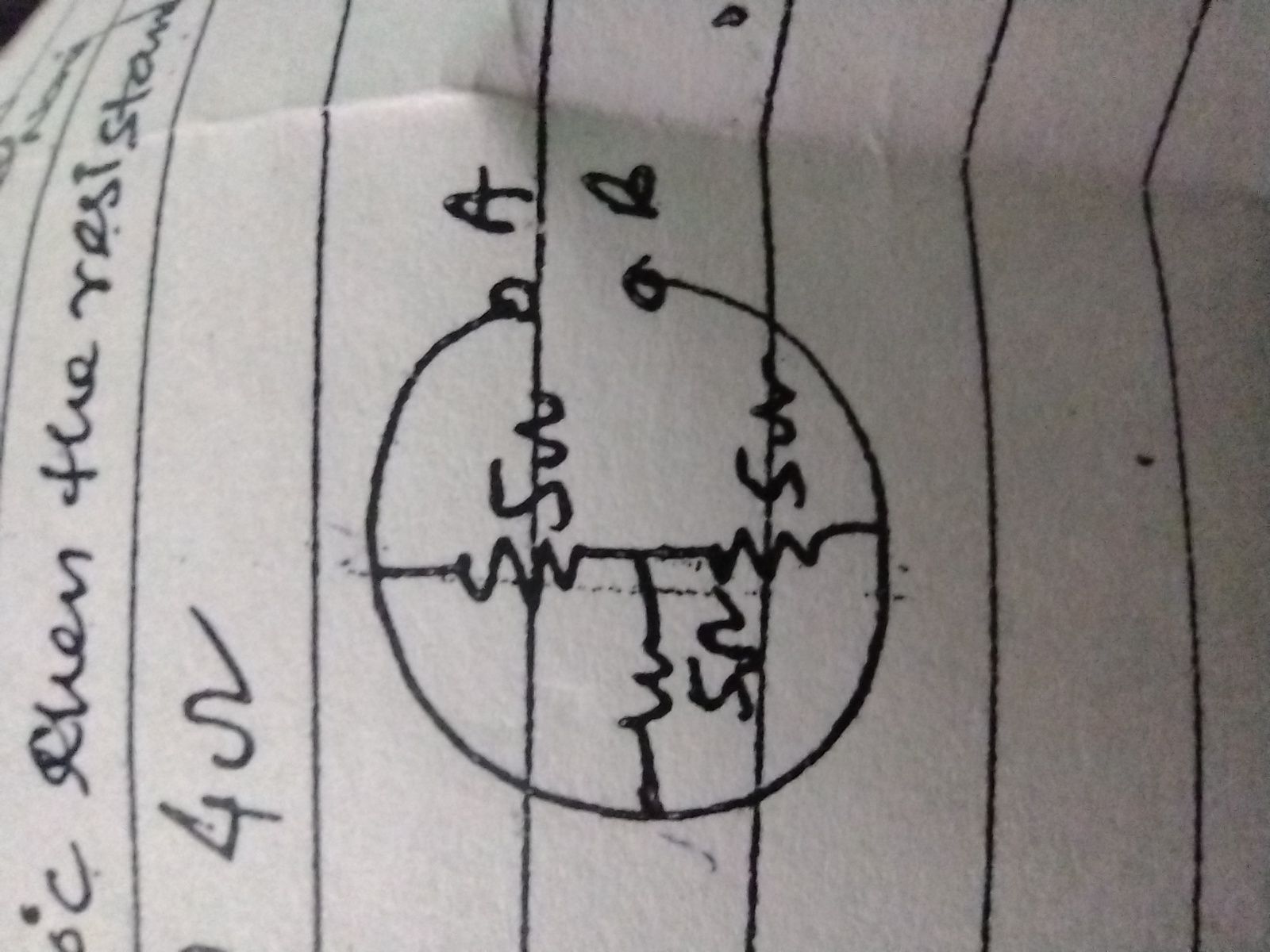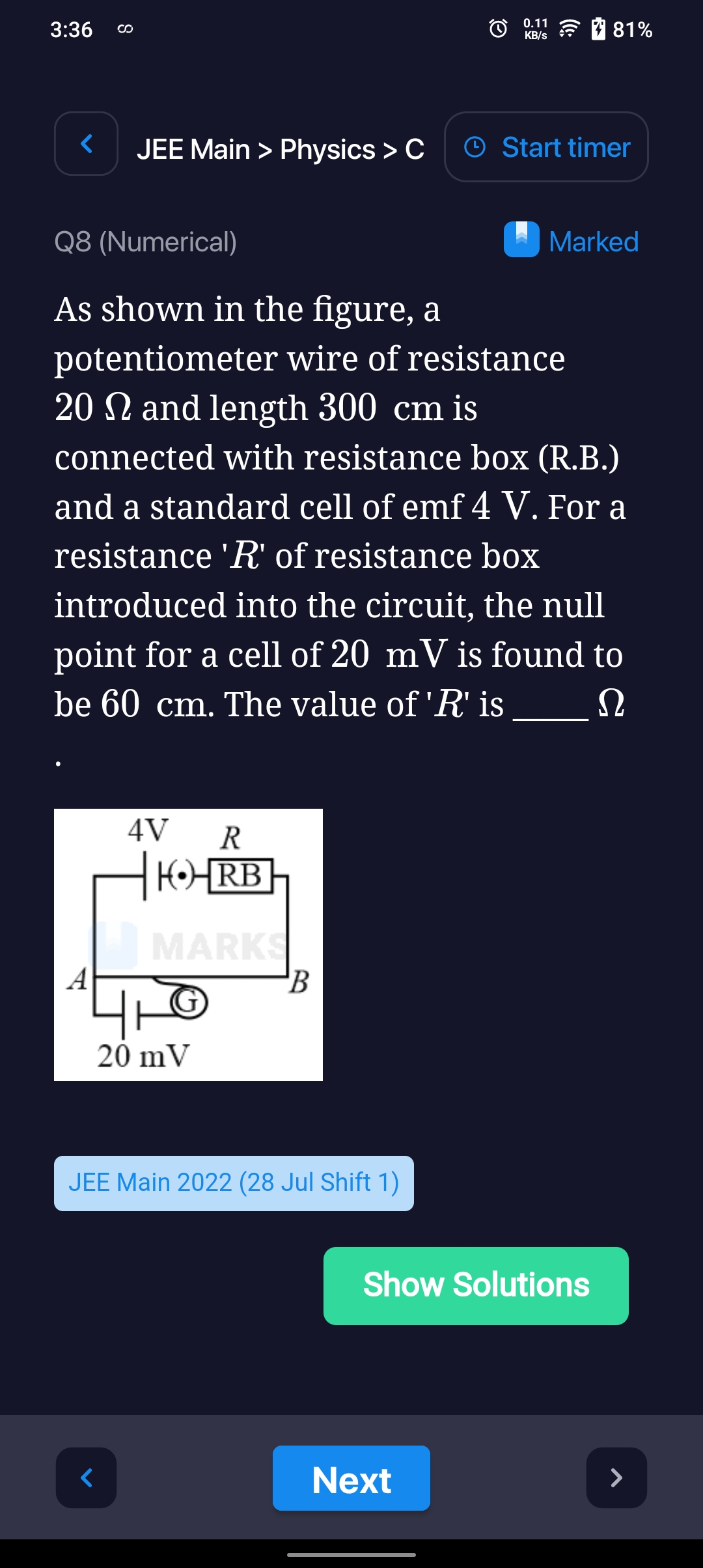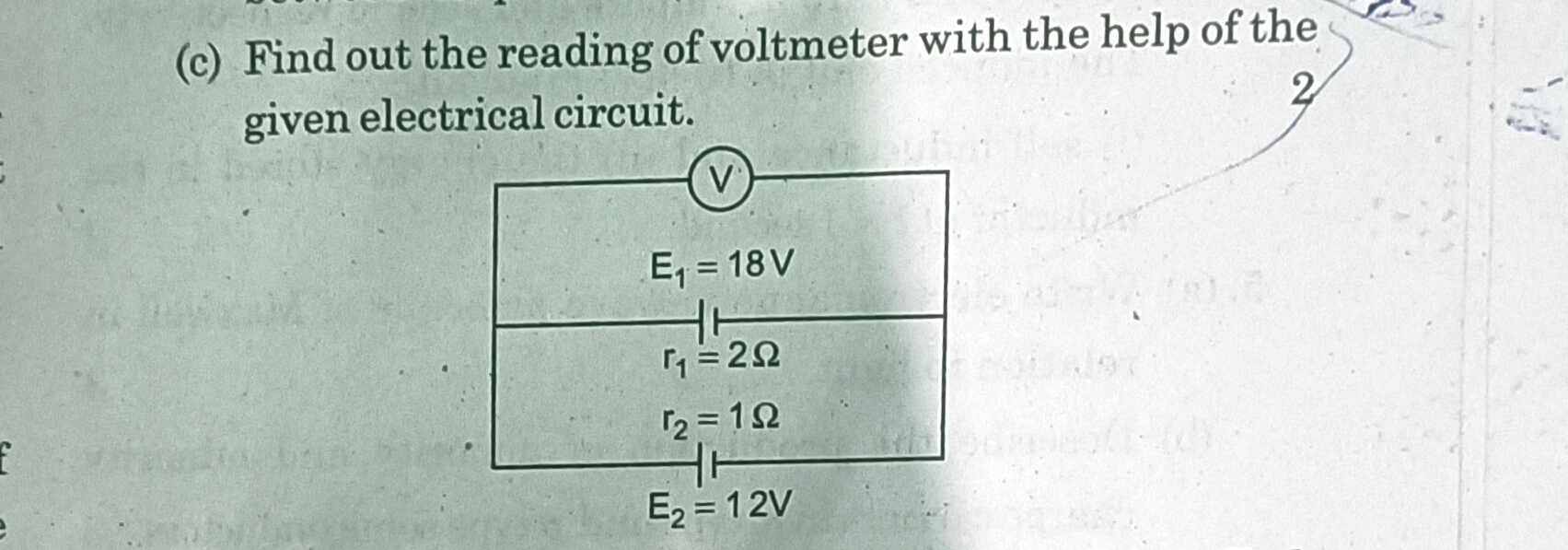CBSE Class 12-science Answered
16. A wire of resistance 3? is cut into three pieces and then each piece is stretched to three times of length. These pieces are connected in parallel and connected across a battery of emf 3 V. Find the current through each resistance.
Asked by Sudheer Nair | 28 Feb, 2012, 02:12: PM
Wire is cut inro three pieces so each wire will have resistance = 1 ohm
We use:-
R = (rho x L) /A
Where: R = resistance in (Ohms) ; rho the resistivity of copper; L = the length of the wire (m) and A is the cross sectional area of the wire (m^2).
The resistance of original length we can represent as:-
R1 = (rho x L1)/A1
and the final length as:-
R2 = (rho x L2)/A2
In these two one thing is constant: rho. So we re-arrange both equations for rho and then equate them. This gives:-
rho = (R1 x A1)/L1 and
rho = (R2 x A2)/L2
Now, we equate them to give:-
(R1 x A1)/L1=(R2 x A2)/L2
Now, when the wire is stretched the new length changes to three times it's original, so we can write:-
L2 =3 x L1
But, what is the change in the area?
To calculate this we need to use something else that does not change, this time the volume.
The original wire length can be thought of as a very long thin cyclinder with a volume =pi x r1^2 x L1
which is then drawn out by the extrusion process to pi x r2^2 x L2. Both volumes will be identical so This means that we can write:-
V1 = V2
pi x r1^2 x L1 = pi x r2^2 x L2
But since L2 = 3 x L1 then we have:-
pi x r1^2 x L1 = pi x r2^2 x 3 x L1
re-arranging we get: r1^2/r2^2 = (pi x 3 x L1)/(pi x L1)
r1^2/r2^2 = 3
Therefore, when the wire is stretched to three times it original length the area, A2 is reduced to one third ( and the radius BTW is reduced to x 1/root (3).
This means that the new radius r2^2 is given by
r2^2 =(r1^2) /3
and we can use this to calculate the new area, A2.
We have already found that:-
(R1 x A1)/L1=(R2 x A2)/L2 so,
we now say
(R1 x pi x r1^2)/L1 =(R2 x pi x ((r1^2)/3))/(3 x L1)
(R1 x pi x r1^2)/L1 = (R2 x pi x r1^2)/(3 x 3 x L1)
R1/R2 = (pi x r1^2 x L1)/(9 x pi x r1^2 x L1)
R1/R2 =1/9
Hence R2/R1= 9
R2 = 9 x R1
R = (rho x L) /A
Where: R = resistance in (Ohms) ; rho the resistivity of copper; L = the length of the wire (m) and A is the cross sectional area of the wire (m^2).
The resistance of original length we can represent as:-
R1 = (rho x L1)/A1
and the final length as:-
R2 = (rho x L2)/A2
In these two one thing is constant: rho. So we re-arrange both equations for rho and then equate them. This gives:-
rho = (R1 x A1)/L1 and
rho = (R2 x A2)/L2
Now, we equate them to give:-
(R1 x A1)/L1=(R2 x A2)/L2
Now, when the wire is stretched the new length changes to three times it's original, so we can write:-
L2 =3 x L1
But, what is the change in the area?
To calculate this we need to use something else that does not change, this time the volume.
The original wire length can be thought of as a very long thin cyclinder with a volume =pi x r1^2 x L1
which is then drawn out by the extrusion process to pi x r2^2 x L2. Both volumes will be identical so This means that we can write:-
V1 = V2
pi x r1^2 x L1 = pi x r2^2 x L2
But since L2 = 3 x L1 then we have:-
pi x r1^2 x L1 = pi x r2^2 x 3 x L1
re-arranging we get: r1^2/r2^2 = (pi x 3 x L1)/(pi x L1)
r1^2/r2^2 = 3
Therefore, when the wire is stretched to three times it original length the area, A2 is reduced to one third ( and the radius BTW is reduced to x 1/root (3).
This means that the new radius r2^2 is given by
r2^2 =(r1^2) /3
and we can use this to calculate the new area, A2.
We have already found that:-
(R1 x A1)/L1=(R2 x A2)/L2 so,
we now say
(R1 x pi x r1^2)/L1 =(R2 x pi x ((r1^2)/3))/(3 x L1)
(R1 x pi x r1^2)/L1 = (R2 x pi x r1^2)/(3 x 3 x L1)
R1/R2 = (pi x r1^2 x L1)/(9 x pi x r1^2 x L1)
R1/R2 =1/9
Hence R2/R1= 9
R2 = 9 x R1
R2 = 9 ohms
Now the 3 wires each of 9 ohms are connected in parallel so final resistance = 3 ohms
Current = 3/3 = 1 Ampere
Answered by | 01 Mar, 2012, 10:29: AM
Concept Videos
CBSE 12-science - Physics
Asked by mailtoanjalip2005 | 16 Mar, 2024, 08:22: PM
CBSE 12-science - Physics
Asked by patelnamra608 | 26 Jan, 2024, 11:01: AM
CBSE 12-science - Physics
Asked by smitdholakiya28 | 17 Dec, 2023, 09:37: AM
CBSE 12-science - Physics
Asked by shivashikhar69 | 09 Dec, 2023, 02:27: PM
CBSE 12-science - Physics
Asked by nikhilsai2616 | 19 Nov, 2023, 01:05: AM
CBSE 12-science - Physics
Asked by snehashiragannavar773 | 21 Oct, 2023, 02:38: PM
CBSE 12-science - Physics
Asked by dr.strange45678 | 02 Aug, 2023, 12:31: PM
CBSE 12-science - Physics
Asked by komalbrar0987 | 17 May, 2023, 06:15: PM
CBSE 12-science - Physics
Asked by amanpanday6384 | 22 Dec, 2022, 12:42: PM

